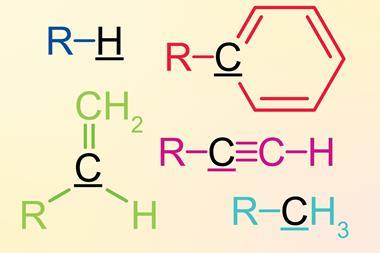Supporting a hypothesis is more difficult than it might seem

For a chemical hypothesis to gain credibility, empirical evidence must somehow be invoked to support it. For example, when during the 1660s chemist Robert Boyle experimented on gases, the observations he published proved decisive for the acceptance that the pressure of a gas is inversely proportional to its volume. We still call this relationship Boyle’s law, even though he was not the first to conceive of it.
The central role of experimentation in science was decisively established during the scientific revolution by Francis Bacon. Bacon promoted the rigorous examination of nature through repetitive and reproducible experiments that should be performed and checked by an organised community of scientists. To this day, the idea that inferences should be based on a careful analysis of empirical observations remains a defining feature of science.
But how does confirmation work exactly? That is, how should empirical data and observations be used to support a hypothesis?
This is neither an uncontroversial nor an easy question to answer. As early as the 18th century it was pointed out that no matter how much empirical evidence one collects in support of a hypothesis, it is always possible that the hypothesis eventually turns out to be wrong. This issue was raised by philosopher David Hume and is called the problem of induction. As philosophers often say when they try to explain this problem, no matter how many black ravens one observes, it will always be logically possible that the next one turns out to be white. Or, as writer Jorge Luis Borges poetically put it, ‘the proofs of death are statistics and everyone runs the risk of being the first immortal’.1
Given how important induction is to science, some philosophers have attempted to resolve or at least come to terms with this problem. For example, some claim that while the results of the inductive method can never be guaranteed, induction remains the most rational and reliable method of making inferences about the world. Others take the use of induction and its success in science to be justified by the existence of necessary connections in the world. Philosopher Karl Popper on the other hand, maintains that the problem cannot be solved and proposes that the scientific method is based instead on the idea of falsification. Scientists should not design experiments to collect positive empirical evidence and support a hypothesis, but for the purpose of disproving that hypothesis. In this context, if a hypothesis has not been falsified, the only thing we can say is that it is provisionally corroborated.2
This is not the only issue one needs to consider with respect to confirmation. The physicist, historian and philosopher Pierre Duhem noted that choice among competing hypotheses is often based on the implementation of some form of eliminative reasoning: empirical evidence is invoked to eliminate theories that seem less plausible.3 But how can we be certain that we have conceived all plausible hypotheses and that the true one is among them? Duhem believed that it is perfectly possible for an empirical observation to be consistent with more than one hypothesis and that there will always be unconceived alternatives that could match equally well with our observations.
This is called the problem of unconceived alternatives and philosophers have considered it for the case of atoms. Specifically, a matter of debate is whether the atomic hypothesis is the only one that could have accounted for Brownian motion. According to philosopher Kyle Stanford, at the beginning of the 20th century alternative hypotheses to the atomic one were available, such as the electromagnetic view of matter, which could equally have explained Brownian motion.4 On the other hand, philosopher Sherrilyn Roush resists this claim and takes that ‘there do not seem to be any hypotheses that could explain a random walk in the Brownian particles that are not included within this atomic hypothesis’.5 Whatever the case, this issue opens the room for conjecture and puts into question how certain we can be of our accepted scientific hypotheses.
In chemistry too, the credibility of eliminative reasoning has been evaluated in light of the problem of unconceived alternatives. Robin Hendry has examined how in the 1800s chemists developed different representations of isomeric structures.6 He points out that the first Nobel prize winner in chemistry, Jacobus Henricus van ’t Hoff, successfully adopted eliminative reasoning when looking at different representations of stereoisomers. Hendry claims that van’t Hoff successfully inferred that carbon forms a tetrahedral structure because the square planar arrangement gave a surplus of alternative stereoisomeric structures, which went against empirical evidence. So, at least in this instance, the use of empirical evidence in eliminative reasoning proved to be reliable.
I’d like to say that this covers the main conundrums around confirmation but that would be incorrect! There are other puzzles too, such as the Grue problem and the Raven paradox, which show that the role of confirmation in science is even more nuanced. Some of these problems are principled considerations that – as such – are not expected to radically change how science is done. However, others point out that chemists need to be mindful of how they develop and test different hypotheses. One needs to consider carefully alternative hypotheses and analyse in detail how exactly pieces of empirical evidence provide support to one or more scientific explanations.
References
1 Poem ‘Someone’ in J L Borges, Selected Poems, (ed. A Coleman). Penguin Books, 2000
2 K Popper, Conjectures and refutations: The growth of scientific knowledge. Routledge, 2014
3 P Duhem, The aim and structure of physical theory (Vol. 13). Princeton University Press, [1914] 1991
4 P K Stanford, Brit. J. Philos. Sci., 2009, 60, 253 (DOI: 10.1093/bjps/axp003)
5 S Roush, Tracking truth: Knowledge, evidence, and science. Clarendon Press, 2005
6 R Hendry, Spontaneous Generations: A Journal for the History and Philosophy of Science, 2018, 9, 108 (DOI: 10.4245/sponge.v9i1.28062)

















No comments yet